Overview
Founded in 1981, this multinational information technology company has presence in 50+ countries with major presence in APAC, North America, Middle East and Europe. It has 200,000+ employees and generates over USD 14 Billion in annual revenues. It offers technology services such as software development, digital engineering, cloud-based enterprise transformation, global management consulting, and business process management (BPM), to companies across finance, insurance, and manufacturing sectors.
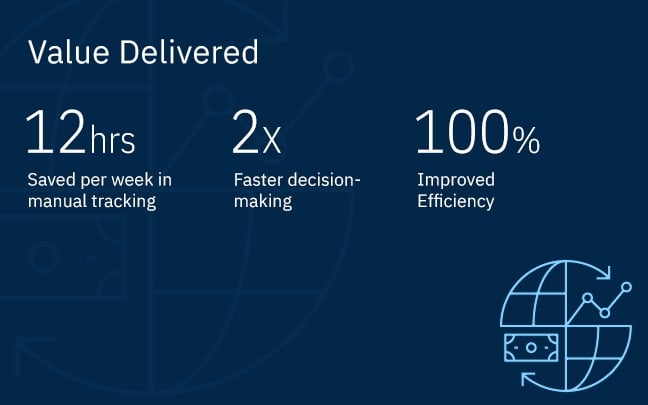
Key Challenges
With the ever-evolving and highly-competitive technology solutions and services landscape, the company found it critical to gain insights into their competitors’ marketing strategies in order to build a forward marketing strategy and gain an edge over their competitors.
The company was often in a reactive position, responding after a competitor had made a series of moves. Additionally, they were not as nimble as they should have been due to the time required to investigate what the competition was doing.
To remedy this, the marketing team decided to monitor competitors’ marketing activities to gain insights into their competitor’s target audience, uncover important industry trends, understand which channels worked best for their competitors, grasp competitor’s positioning and analyze trends in competitors’ content initiatives to adjust their content strategy.
Thus, in line with the company’s vision, the marketing team of the company undertook the task of collecting, analyzing and sharing competitive intelligence with the global marketing leadership.
The company decided to track marketing collateral and other forms of content published by their competitors, including blogs, case-studies, articles, events, webinars, etc. They also wished to track the key trends and the marketing vernacular used by their competitors in their content marketing activities, so that they could understand their competitors’ content strategy and positioning.
However, when the company’s marketing team tried to manually collate data from multiple sources, due to the sheer volume of the marketing activities done by the competitors, the process was not humanly possible. In addition, they faced many other challenges, which included:
- Qualitative Data: The information gathered was qualitative in nature. It was difficult to quantify it for trends analysis.
- Visual representation: Because most of the data was qualitative, visually representing it and gleaning insights from it was not possible.
- Digital Noise: Tracking competitor’s website updates and content was challenging, due to the number of the web pages on each website, as well as the quantity of content published in different formats across a broad digital landscape.
To mitigate these challenges, the company began looking for an automated competitive intelligence tool or platform that met the following requirements:
- Enable tracking competitors’ website changes and marketing activities to gain early insight into their tactical moves such as new solution and service launches, promotions, and changes in positioning.
- Facilitate contextual tagging of information into different categories for trends analysis.
- Analyze the collected information and visually represent it in an accurate, coherent manner, using intuitive dashboards, graphs, and word clouds.
- Ensure consistently proactive GTM positioning through real-time competitive and market intelligence.
After adequate due diligence, Contify, a leading competitive and market intelligence solution provider, was selected.
Contify’s Solution
Contify developed a thorough understanding of the company’s strategic objectives and requirements, subsequently configuring a customized module for its competitive intelligence platform. This configuration comprised of:
- Sourcing of Information
- Contify analysts identified sources that provide relevant coverage to the company on key intelligence topics such as competitors’ marketing activities targeting Artificial Intelligence, Blockchain and Deception technologies. These sources included news websites, business information websites, social media, press release agencies, regulatory portals, job boards, review websites, and especially competitor’s websites, specific website pages, marketing resources like podcasts, webinars, videos, blogs, as well as their review sources, newsletters and emails.
- Taxonomy:
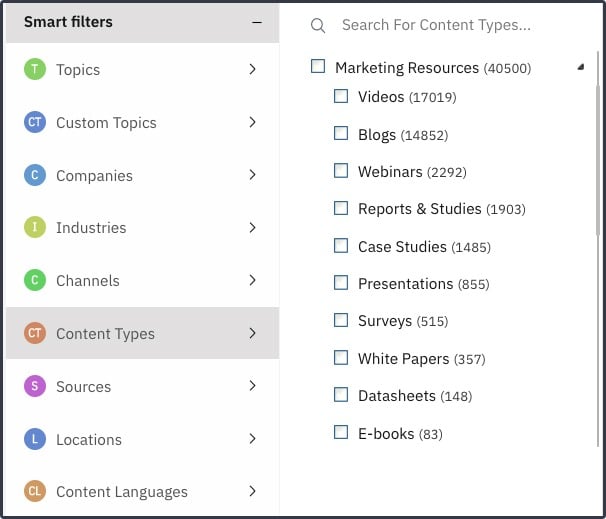
- Content Types –
- Case studies
- White papers
- Blogs
- Podcasts
- Client testimonials
- Videos
- Articles
- Service/product/solution/tool offerings
- Webinars
- Events
- Marketing collateral
- Press releases
- News and social media mentions
- Website updates
- Online ratings and reviews
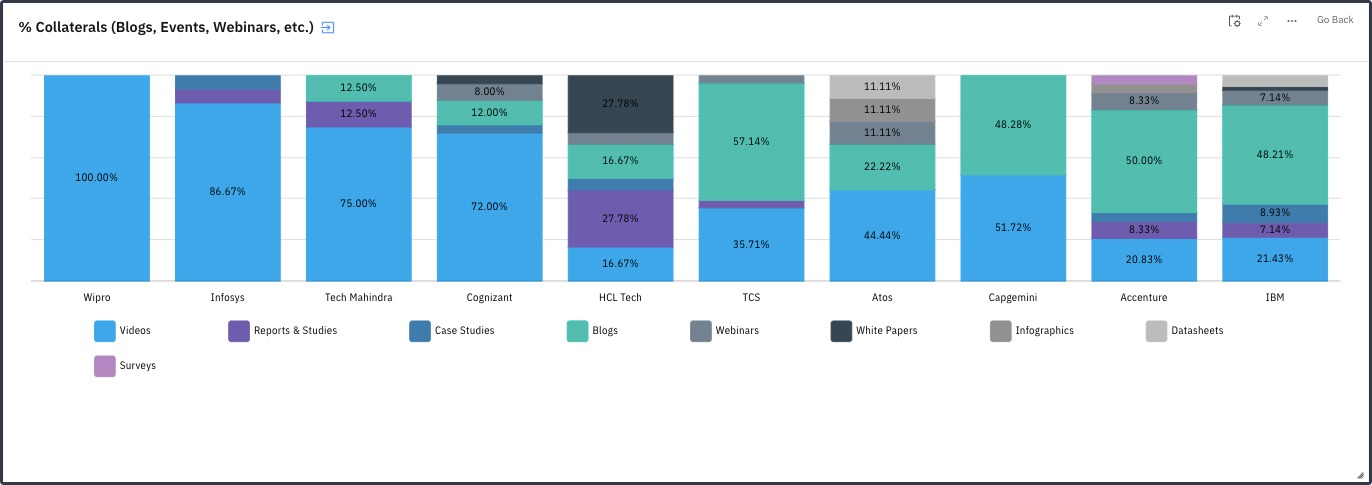
3. Dashboards: Customized dashboards that allow a bird’s eye-view of the competitors’ activities in relation to the company’s own marketing activities, and identify trends and patterns. A number of widgets were created in this customized dashboards to visually represent the following:
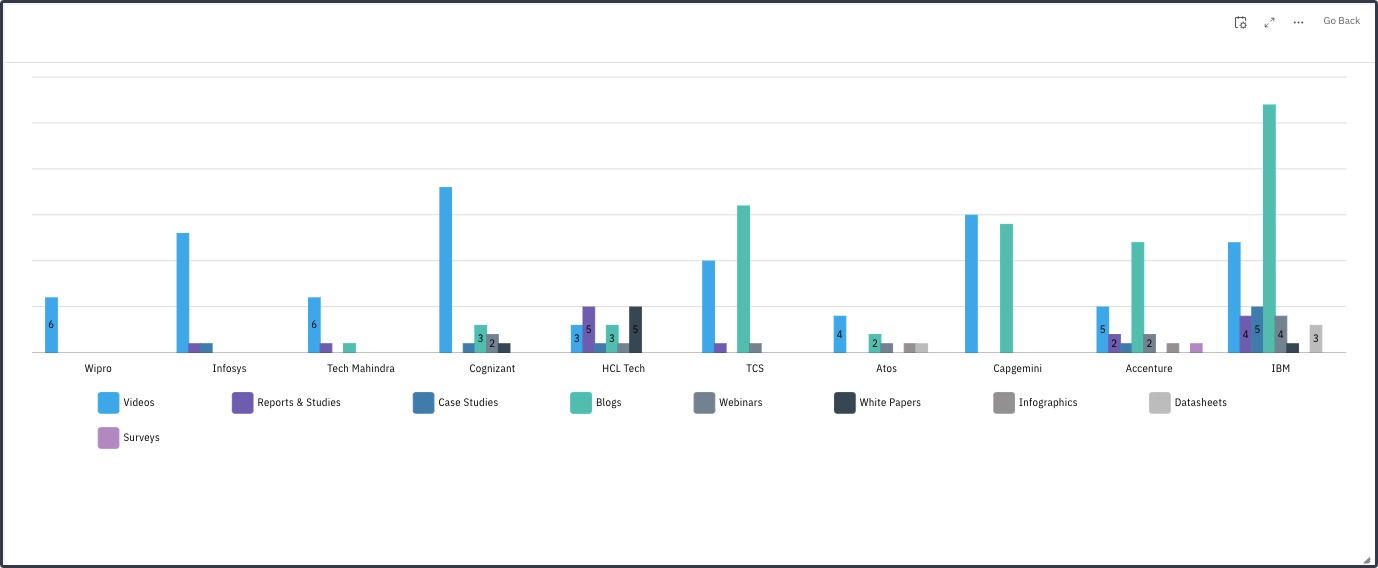
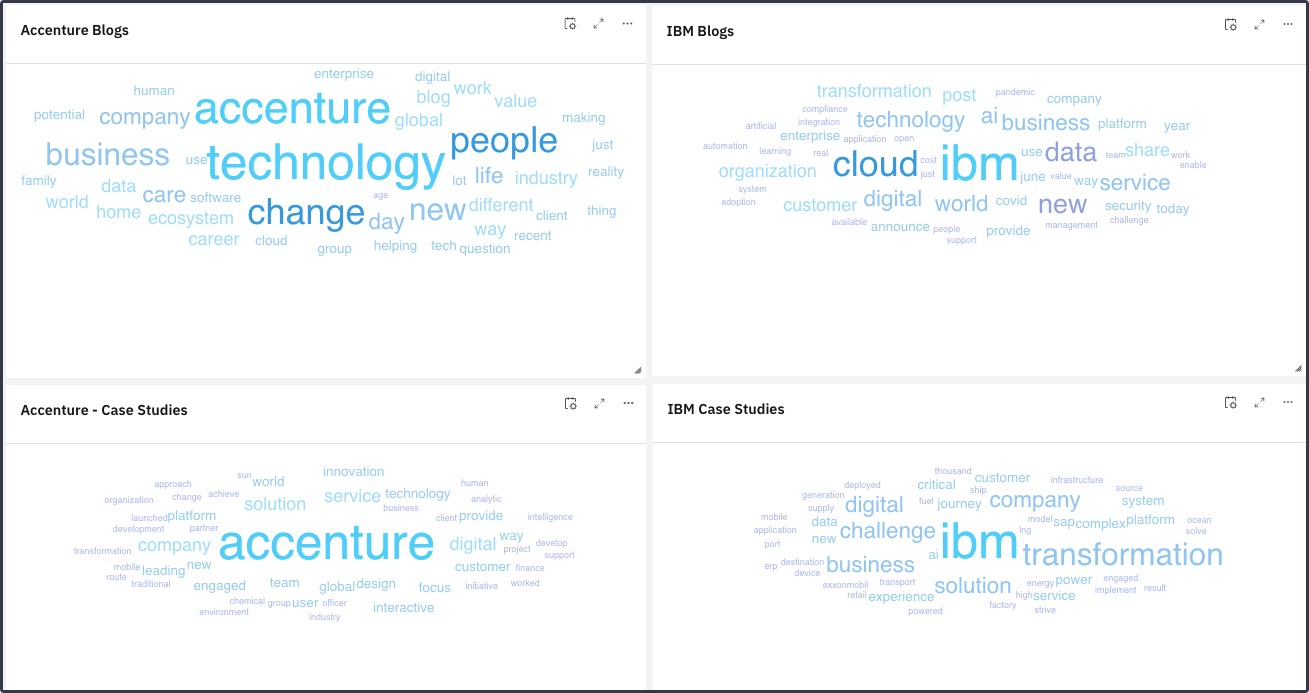
-
- Wordcloud: Trends of keywords used in blogs and case-studies to gain insights on competitor’s marketing vernacular.
- Marketing Activity: The Company Vs. Competitors, to gain a bird’s eye view of the competitor’s marketing activities, understand which type of marketing collateral they publish the most, and determine their content strategy,
- Marketing Activity: By Competitors, to determine which competitor does the highest number of marketing activities.
- Competitor Feed: The recent marketing activity of the competitors in the form of newsfeed with daily updates to understand any subtle or major changes in their positioning.
- Graphs representing overall marketing activity of competitors, including marketing resources, news articles, regulatory filings, press releases, events, social updates, thought leadership and podcasts to drill down into the competition’s marketing strategies.
- Graphs representing the marketing collateral used by competitors, including videos, case studies, blogs, reports, white papers and webinars to gain granular insights into their content strategy.
- Trend analysis based on the topic tagging of the information, which offered insights on what topics, industries and/or technologies competitors are focusing on in their marketing activities, to help inform the company’s own marketing strategy.
Impact
Informing Forward Marketing Strategy Based on Competitor Marketing Activity
Using Contify’s customized platform and dashboards, the company was able to keep a constant watch on their competitors’ marketing activities and leverage them to drive strategic decisions. This also informed their forward marketing strategy, which enabled them to strategically position their services against their competitors, explore white spaces identified in the competitors’ marketing messages, and to capitalize on new opportunities.
Transforming Strategic Goals into a Tactical Marketing Plan and Content Strategies
By analyzing their competitor’s content marketing activities, the company identified the gaps that existed in their own marketing efforts and created differentiated content that was lacking in the market. The company was able to draw from the marketing expertise of each of their competitors to create a tactical marketing plan that leveraged the competitors’ weaknesses to the company’s advantage, in addition to fulfilling their strategic goals.
Saving Time Spent in Manually Tracking Competitor Marketing Activity
Earlier, the company’s marketing team spent 40% of their time on manual research. That is 16 hours per week! Contify’s solution reduced that time to only 4 hours per week, which is 12 hours of time saved every week.
“Contify’s solution helped us connect the dots regarding our competitors’ activities to understand their perspective and where they’re headed, imbuing our marketing strategies and tactics with the intel we needed to create competitive differentiation.”
– Marketing Manager, IT and Consulting Services Company
By the Numbers
-
12hrs
of time saved every week in manual tracking
-
2X
Faster decision-making
-
100%
Improved efficiency





